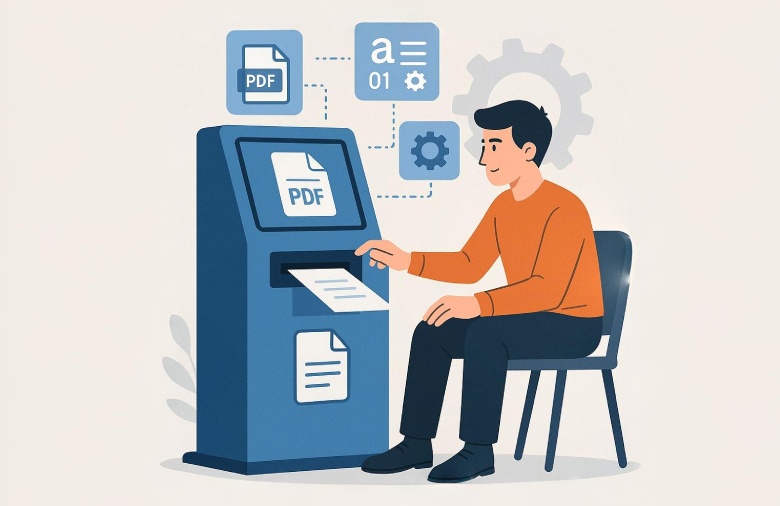
How AI Is Changing the Way We Validate Ideas – Before Writing a Single Line of Code
Most startups fail before they ship. Not because the code was wrong, but because the idea was never right.
That’s why validation matters. And not just later – before anyone opens a text editor. Before budgets get burned. Before pitch decks start making promises.
The problem? Validation used to take weeks. Now, thanks to AI, it takes hours. Maybe less.
This article is about how founders, product teams, and consultants are using AI to pressure-test ideas – before they build anything. Fake landing pages. Simulated user interviews. Quick message testing. It’s not just faster. It’s smarter.
And for anyone trying to build a minimum viable product, this shift can save weeks of guessing.
It Starts With a Prompt, Not a Prototype
Used to be, idea validation meant building a first version. Or at least a wireframe.
Now? You type something like:
“I want to build an app that helps solopreneurs automate client onboarding.”
In seconds, GPT can:
- Suggest core features
- Outline a user flow
- Draft a landing page
- List common objections
- Simulate a user conversation
You just skipped three meetings and a figma file. You're not validating yet – but you're way closer.
AI for Fast Market Checks
Let’s say you're testing whether busy parents want a weekly meal planner app.
Instead of surveys or cold outreach, you can:
- Use GPT to create fake customer quotes based on Reddit threads
- Run simulated buyer interviews (prompt: “Act like a busy working parent. I’m going to pitch you an idea…”)
- Use ChatGPT or Claude to draft landing page copy for multiple personas
- Plug that copy into Framer or Typedream to spin up a fake product page
- Add a Waitlist CTA – and share it on Reddit, IndieHackers, or a small ad campaign
Now you’re getting a real signal. People are clicking. Signing up. Or ignoring it entirely.
This is product discovery in 2025 – low stakes, fast cycles, honest feedback.
Simulated Interviews That Feel Real (Almost)
Founders dread user interviews. Scheduling. Awkward silences. Bad questions. But AI can help you practice – or even simulate the other side.
You can prompt:
“Act like a fintech product manager who’s been burned by slow compliance tools. Ask skeptical questions about my new platform.”
It’s not perfect. But it’s enough to catch holes in your story.
Even better? Run the same test with five different personas. Get objections before they happen. Refine your pitch in a few hours – not weeks.
Fake Product Pages, Real Reactions
One of the fastest ways to test an idea: build a landing page that doesn’t actually connect to anything. Just a headline, a short demo, and a button that says “Join the waitlist” or “Get early access.”
Use AI to:
- Write the copy
- Generate logos and UI screenshots (using Uizard, Galileo, or Figma plugins)
- Simulate testimonials
- A/B test CTAs
Share it. Measure clicks. Watch scroll depth. Collect email signups.
If no one bites? Good. You didn’t waste time building something nobody wanted.
This is the kind of pre-build work that S-PRO often sees during IT consulting for early-stage ventures. It’s not about building fast – it’s about learning before you build at all.
What You Still Need to Do Manually
AI can speed up idea testing. But it won’t do all the work.
You still need to:
- Ask better questions
- Choose the right audience
- Interpret messy feedback
- Know when to move forward – or let the idea go
AI gives you speed. You still need judgment.
That’s why experienced teams treat AI as a boost – not a replacement. Use it to simulate, not substitute.
A Few Real Use Cases That Work
|
AI Use |
Purpose |
Tools |
|
Fake landing page |
See if users care |
Framer + GPT |
|
Simulated interviews |
Pressure-test messaging |
GPT + Notion |
|
Ad copy testing |
Try 5 angles in 1 day |
ChatGPT + Facebook sandbox |
|
Problem validation |
Extract patterns from Reddit, reviews |
Claude + Perplexity |
|
Feature prioritization |
Let AI organize feedback |
GPT + Airtable |
These aren’t hacks. They’re just faster ways to ask the same old question: “Should we build this?”
Final Word
You don’t need a product to test an idea. You just need a prompt. A headline. A little curiosity. And the willingness to be wrong early.
AI won’t validate your idea for you. But it’ll help you ask better questions. It’ll speed up the early mess. And it’ll show you red flags before you waste your first dev sprint.
That’s not just smart – it’s necessary.
So before you build, try this: fake the product. Test the message. Talk to a simulated user. Launch a landing page with no code. Watch what happens.
If people respond? Then build. Maybe with help. Maybe with someone like S-PRO, who’s helped early teams move fast without skipping the hard thinking.
But only after the idea proves itself – first. That part still matters most

From Vision to Funding: Pitch Decks That Convert

Why Most Startups Don’t Fail Because of the Product







